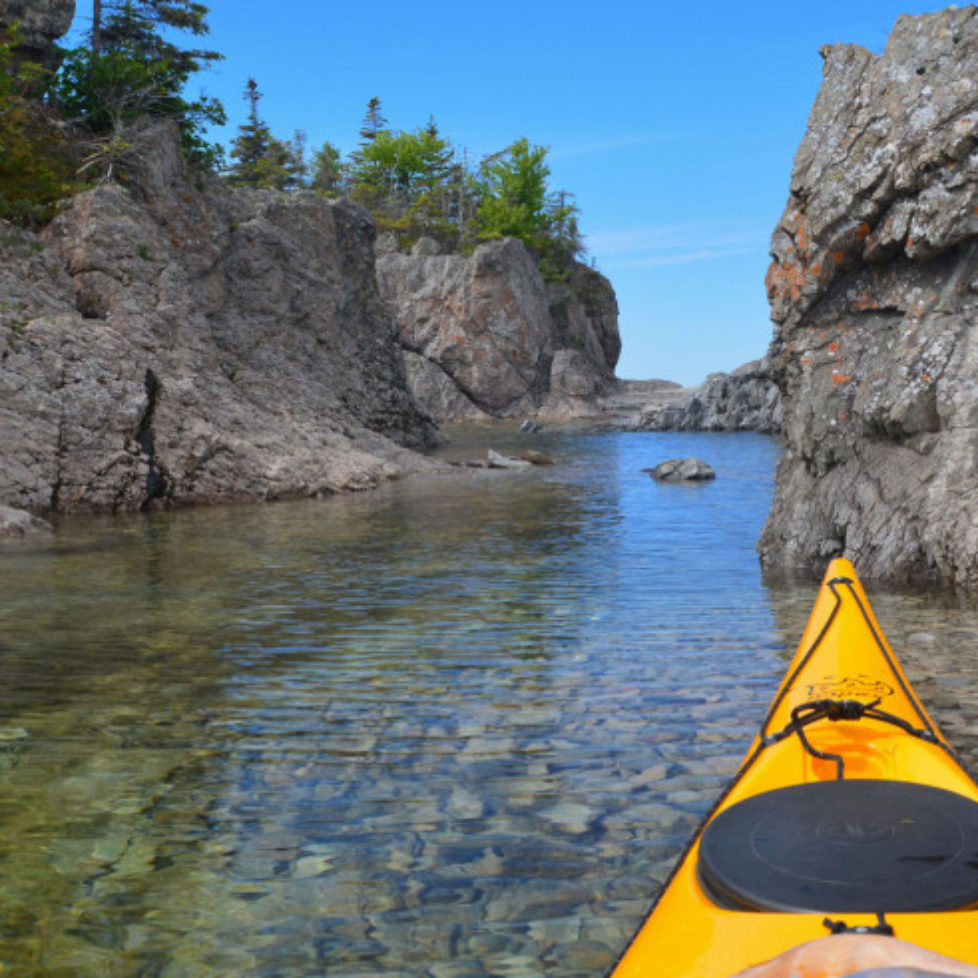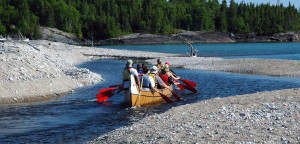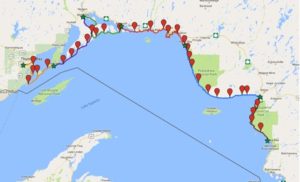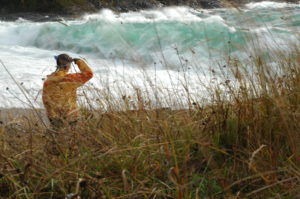On the Rocks
An unusually calm summer made for some mysteriously slimy rocks on Lake Superior’s north shore. Frustrated with clogged water filters and slippery launches, Naturally Superior Adventures senior guide Jake O’Flaherty investigated the gross but (thankfully) normal phenomenon of “rock snot”
This year, paddlers on Lake Superior may have noticed an abundance of gooey algae in the waters lining the cobble shoreline. Some who have spent years on the lake have noted seeing this “goo” or “scum” in areas which were crystal clear in previous years.

Upon seeing the above pictures of rock scum found off Simpson Island, Pam Anderson of the Minnesota Pollution Control Agency (MPCA) suspects it may actually be what is referred to as a “typical epilithic nearshore algal community”. The word Epilithic originates from epi- meaning “upon”, and lithos meaning “stone”. That makes sense; we can conclude that this algae prefers to grow on rocks near the shore.
MPCA Researchers have noted scums west of Thunder Bay to be primarily Diatoma ehrenbergii. Diatom are a type of algae and one of the most common types of phytoplankton.

Evidence of these unicellular organisms have been dated back to the early Jurassic period. They are the base of food chains in aquatic environments, and it is not uncommon to find shorebirds snacking on the smaller organisms such as larvae that gravitate towards diatom patches.
Diatoma ehrenbergii has been observed in the Great Lakes since the 1840s. This is an invasive species, which can also be found in Europe and polar regions. It likely arrived in ballast from ships. According to the National Oceanic and Atmospheric Administration, this specific diatom does not pose an environmental or economic risk to the lake.
One diatom of international notoriety is Didymosphenia geminata, commonly referred to as “didymo” or the much more evocative “rock snot”. Didymo is likely native to Lake Superior, found intermingled with other diatoms in nearshore communities. In other areas of the world this diatom runs rampant, altering the water quality and local ecosystems as well as clogging recreationalist’s water filters. New Zealand is taking measures to mitigate the spread of this invasive species.

Why paddlers may be seeing more rock-loving algae on the lake may be attributed to what is referred to as an “algal bloom” These blooms are caused by an abundance of nutrients in a water system, sometimes caused by agricultural runoff. Anderson believes that a large contributor to the seeming excessive amount of algal communities could be due to the relatively calm conditions we’ve experienced on the lake this year.
Our guides have been irritated with the algae clogging water filters, and some may think twice about swimming along Superior’s cobble beaches; however, this specific goop we see is just a part of the natural ecosystem. We are truly lucky to be able to spend time in regions which are relatively untouched by pollution, although we should be aware and vigilant of non-native organisms that can pose a risk or indicate a water quality issue.









